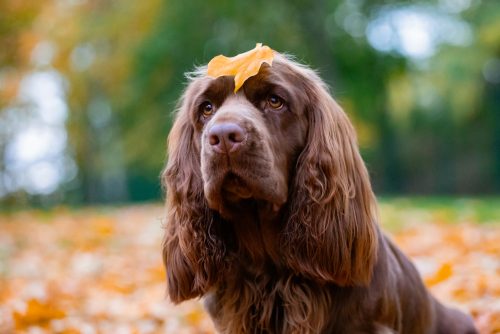
“Dull” isn’t a word one would expect to find in a breed standard, but in fact, four standards mention it in some variation, none of them desirable:
- When approached, the Border Collie should stand its ground. It should be alert and interested, never showing shyness, fear, dullness or resentment;
- Sussex Spaniel: The brows are fairly heavy, the occiput is full but not pointed, the whole [head] giving an appearance of heaviness without dullness;
- The Bernese Mountain Dog ‘s coat is thick, moderately long and slightly wavy or straight. It has a bright natural sheen. Extremely curly or extremely dull-looking coats are undesirable;
- The Newfoundland is a sweet-dispositioned dog that acts neither dull nor ill-tempered.
As you can see, the word is used with regards to behavior, coat, or a structural attribute, and of course this makes sense since “dull” refers to a lack of brightness whether it’s a coat that lacks shine, a depressed deportment, or a structural component. We find “dullness” as used in the Sussex Spaniel standard particularly interesting because “heaviness without dullness” might seem a contradiction in terms. What does this really mean?
It’s tricky.

Sussex Spaniel by Vera Reva/Shutterstock
Top image: Sussex Spaniel by Susan Harper appears with consent;
We are happy to include the watermark for the artist’s protection
www.susanharperartist.com
